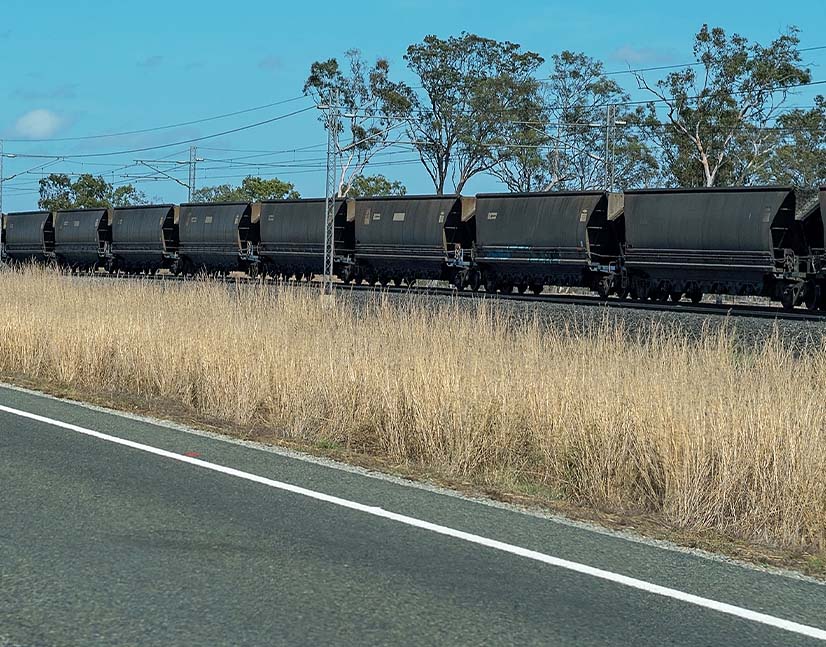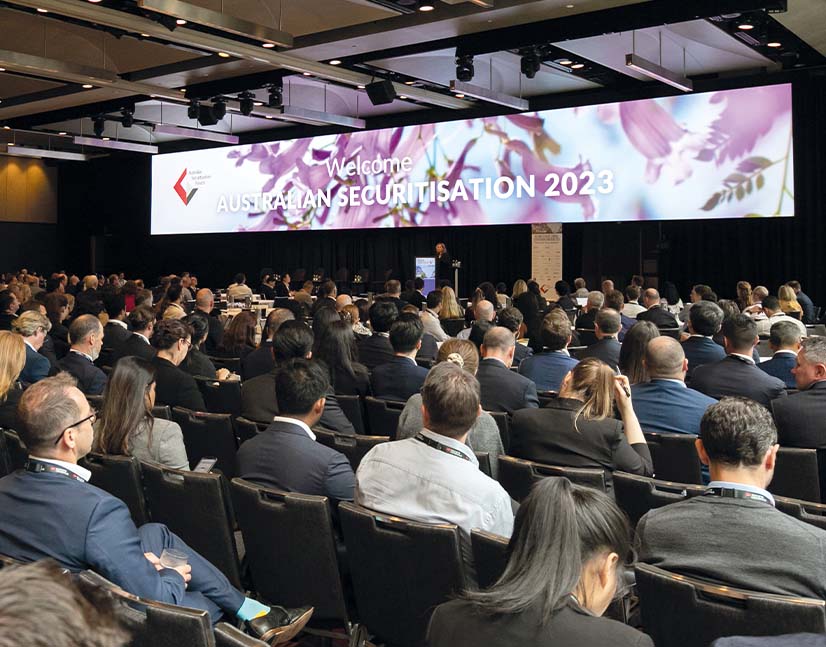
Confidence grows on baseline reliability of Australian corporate market
A few months into 2024, there can be no doubt that the Australian dollar market is demonstrating an all-time best level of demand for corporate transactions, including investor diversity and appetite for extended tenor. Discussion at the KangaNews Debt Capital Market Summit, which took place in Sydney on 18 March, turned to the prospects for this level of support to remain available consistently in future.
Laurence Davison Head of Content KANGANEWS
While hopes were reasonably high going into 2024 that the Australian dollar market would be more supportive of corporate issuance, deal outcomes have consistently surprised on the upside. On the other hand, market users are aware that technical and cyclical conditions have more or less universally aligned in favour of the new-issuance market in recent months.
The question on all corporate market participants’ lips is how much of the new-found level of demand will be retained as and when some of the near-term tailwinds dissipate. If the answer is most or all of it, the start of 2024 may prove to be the moment when domestic issuance finally started to stack up on a more or less level playing field with global core markets for domestic investment-grade names.
There can be no doubt that issuance conditions in the year to date mark a new high-water mark for Australian dollar corporate bonds. Even going back 12 months, corporate treasurers as a rule simply did not feel they could rely on completing substantial benchmark trades in Australia – especially if they were seeking tenor much beyond the five-year sweet spot.
For instance, Alex Hairsine, deputy treasurer at Aurizon Network, told delegates at the KangaNews Debt Capital Market Summit that in 2023 the issuer “didn’t have a great deal of confidence” about domestic issuance filling its relatively substantial refinancing needs and instead chose to issue in the US private placement market followed by engaging with offshore banks to expand the syndicate for a term loan transaction.
Fast forward to March 2024 and Aurizon was comfortable to launch a domestic deal – albeit in part because it only had a relatively small volume need. The result likely gave the issuer grounds to reconsider its assumptions about local issuance: it printed A$350 million (US$231.9 million) of seven-year bonds from a book of more than A$2.1 billion and Hairsine said Aurizon “certainly hit the right timing” for execution.
This level of oversubscription is impressive but not atypical for Australian corporate deals in 2024. Almost every transaction has attracted a book of at least 2-3 times print volume even at final pricing that is often 10-20 basis points tighter than indications. Transactions with small-volume caps – such as those issued by Aurizon, Perth Airport and Adelaide Airport – have had up to 6-7 times oversubscription (see table).
The current year is looking increasingly like an inflection point. Paul O’Brien, executive director, fixed income syndication at Commonwealth Bank of Australia, said at the summit: “The increase in book sizes has been important from the perspective of our engagement with issuers – especially those that may have discounted the domestic market as a viable funding alternative in the past. Many are looking at it more closely now, and we expect new names to come to market over the balance of the year.”
SELECTED 2024 AUSTRALIAN DOLLAR CORPORATE DEAL BOOK SIZES
| Pricing date | Issuer | Rating | Tenor (years) | Print volume (A$M) | Final book volume (A$M) |
|---|---|---|---|---|---|
| 22 Feb | Perth Airport |
BBB/Baa2 |
7 | 300 | 2,200 |
| 27 Feb | ORIX Australia |
A/A3 |
3 |
150 | 790 |
| 27 Feb | Region RE |
BBB/Baa1 |
7 | 300 | 1,380 |
| 28 Feb | Telstra |
A/A2/A- |
7 & 10 | 1,200 | 4,850 |
| 1 Mar | Brisbane Airport |
BBB/Baa2 |
10 | 500 | 2,900 |
| 5 Mar | Stockland |
A-/A3 |
10 | 400 | 850 |
| 5 Mar | Aurizon |
BBB+/Baa1 |
7 | 350 | 2,100 |
| 22 Mar | Ausgrid |
BBB/Baa1 |
7 | 575 | 1,500 |
| 26 Mar | Nestlé |
AA-/Aa3 |
5 & 10 | 1,200 | 3,000 |
| 12 Apr |
Adelaide Airport |
BBB/Baa2 |
7 | 200 | 1,200 |
| 16 Apr |
Sydney Airport |
BBB+/Baa1 |
10 | 850 | 2,450 |
| 17 Apr |
Vicinity Centres |
A/A2 |
10 | 500 | 1,500 |
Source: KangaNews 22 April 2024
BREADTH OF DEMAND
Issuers that have been active in Australia for an extended period note a fundamental change in demand conditions. AusNet Services started a relatively regular issuance programme in Australia in 2010, with the pricing of a A$300 million seven-year deal, and most recently printed a A$700 million 10-year deal that was one of the corporate market highlights of 2023.
AusNet has been the beneficiary of name recognition and support from Asian investors based on its historic ownership by Singapore Power – engagement that has lingered even after that relationship ended – but Alastair Watson, AusNet’s head of treasury, argued that the market is now clearly more healthy for issuers across the board.
He explained: “It hasn’t been a linear progression over the years and there have certainly been some setbacks on the way. The two things that have evolved positively over the years are the Asian bid and the volume available at up to 10 years.”
The regional bid has been a recurring topic of conversation following Australian dollar corporate deals this year. Spurred in large part by the relative value of Australian dollar yield and by the collapse of US dollar-denominated supply from China, Asian investors have reliably accounted for 20 per cent or more of corporate deal books in 2024. They have also often provided early price and volume leadership in the execution process, especially in deals earlier in the year as market momentum was being established.
At the KangaNews event, Pauline Chrystal, portfolio and ESG manager at Kapstream Capital, compared two Brisbane Airport transactions to illustrate the phenomenon. In 2020, the issuer priced a 10-year deal with mid-single-figures of distribution to Asia and to the private bank and middle market sector that is especially prominent in the region. Fast forward to 2024, and the same tenor from the same borrower trebled Asian distribution and doubled the private bank and middle market component.
“The emergence of frequent 10-year issuance makes sense in the context of the significance of Asian demand – specifically how common 10-year US dollar issuance in Asia has historically been,” Chrystal concluded.
Even better news for corporate issuers is that domestic accounts have responded to Asian investors’ willingness to engage with trades early. Hairsine revealed: “Early orders and pricing leadership certainly help. But we also received this from a number of Australian investors in our deal – which we attribute to the volume of work we have done with investors over the past 12 months.”
O’Brien added: “When we start the IOI process we typically get early engagement from Asia – it is almost a given at present. But a set of domestic investors is also very constructive, and more domestic investors are putting their best foot forward early in the process now than was the case a couple of years ago.”
“When we start the IOI process we typically get early engagement from Asia – it is almost a given at present. But a set of domestic investors is also very constructive, and we are seeing more domestic investors putting their best foot forward early in the process now than we did a couple of years ago.”
FUTURE HOPES
Issuers, investors and intermediaries are aware that the coalescence of positive conditions that has supported deal outcomes in early 2024 will not last forever. But they are also confident that a new baseline level of engagement with the corporate market has been established and that it will be maintained even if a more challenging backdrop emerges.
“I am fairly confident that a number of the factors supporting the constructive backdrop will continue,” Hairsine said. “It is possible that rates may be a little lower in 9-12 months’ time, for instance – but I don’t expect this will unwind the interest in bonds as an asset class.”
Chrystal added: “My feeling is that the baseline has been raised. Australia is on the map for regional investors now, and will stay there even if Chinese issuance were to come back to full steam. For instance, whereas historically Australian issuers might have needed an Asian link – ownership, for instance – to get participation from the region, a much wider group of local names are familiar within the Asian investor base nowadays.”
A real game-changer would be a larger group of issuers factoring in Australian dollars as a strategic part of their funding plans, including for volume on a par with global core markets and for extended tenor.
This may be happening. Watson explained: “We always used to regard Australian dollars as something of a ‘gap filling’ market. But now we can realistically say – after last year and what we have seen at the start of 2024 – that it can be the main source of funding for us, even at longer tenor. The equivalent to a euro benchmark is A$700-800 million, and if we can reliably do this size we could be talking about more Australian dollar deals being done instead of euros.”
Indeed, Watson is more focused on further market development than preserving gains already made. He said his aspirations are for an Australian dollar market than can push toward 12-15 year tenor and reliable deal volume to trend toward A$1-1.5 billion for issuers that need this scale.












